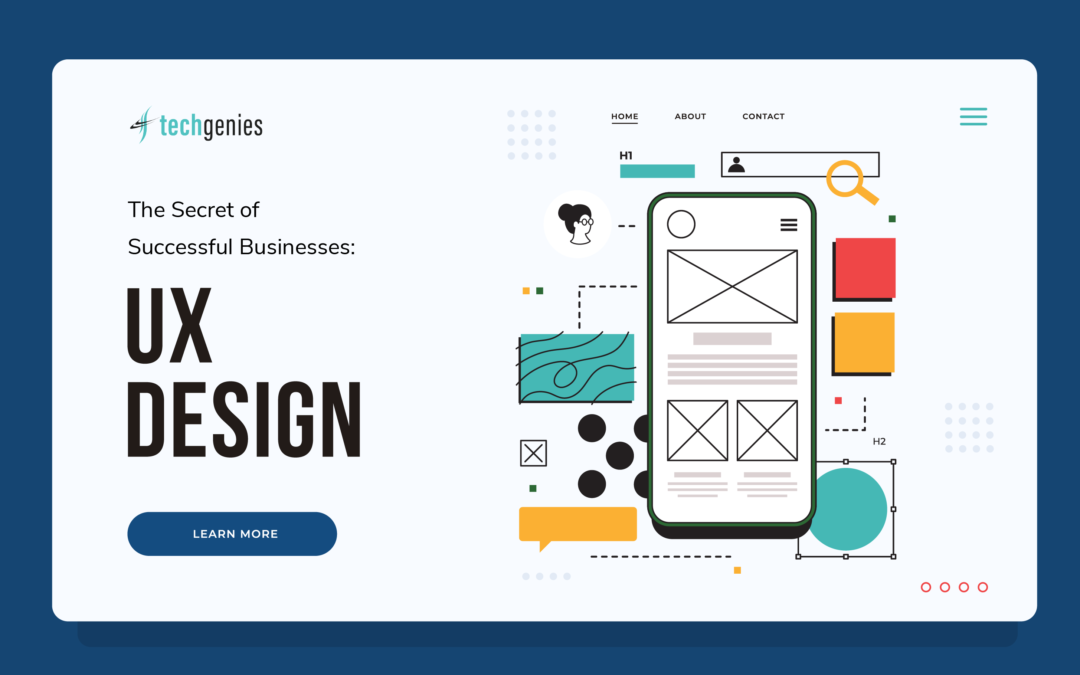It is often said that the best designs are those that go unnoticed, and that’s no truer than when viewed through the lens of a UX architect or designer.
In e-commerce web design, the user should be thinking about making an online purchase rather than the site. This same concept applies to countless other industries and interactions. For example, when eating a bowl of cereal, you should be thinking about the goal of consuming the cereal, not using the spoon.
Creating the process to help users reach their goal is known as user experience (UX) design.
What is UX Design? Is it Just a Trend?
UX design is commonly associated with apps and websites. The modern term, “user experience design” was created in the mid-nineties by Don Norman, former Vice President of Apple’s Advanced Technology Group. Norman used this phrase to encourage users to think about the interactions and experiences we have in everyday life just as he encouraged companies to think about user-centered design.
Although the term is fairly new, the concept of user experience can be traced back to the ancient Chinese philosophy of Feng Shui. The goal is to create a harmonious space in an optimal way for those to navigate through the room. Just as one would find the ideal arrangement of objects within a space, a UX designer would use these same concepts to create a user-friendly experience on a website.
For example, having text for every button and action made web pages feel crowded and hard to read. Designers began to transition to universally understood symbols and icons to save space while still conveying their purpose. To get the message across clearly, some designers took to Skeuomorphism by creating representative objects that mimic their real-world counterparts, e.g. the email icons we see everyday look like a paper envelope even though email is completely digital.
No matter the medium, great UX design will anticipate how the user will interact with the product and help them reach their goal while creating meaningful and relevant experiences. User Experience Design was important before the internet and will continue to be important for the foreseeable future.
Does UX Design Increase Conversions?
According to a Forrester study, a well designed user interface can increase the conversion rate, that is to say, more users will complete desired website goals by 200% to 400%.
For example, a consumer could be in the market for car repair and use a search engine like Google to find the best option to spend their money on. Although all the searches will be filled with different companies offering the same service, the client will keep in mind the companies who have a website with easy to find information.
The process of creating a great UX design includes deciding what you want the user to do. This could be anything from wanting the client to call for more information, to filling out a contact form, or signing up for newsletters. The purpose of UX design is to decide what experiences people should have with a website or product and how they interact with it.
An effective user interface is critical to your success by increasing your website’s conversion rate. A well thought out UX architecture or flow to your website or app can encourage your users to become paying customers, and helps keep your paying customers happily engaged.
Does Implementing UX Design Lead to Higher Rankings in SEO?
If you are already familiar with SEO, you will know the importance of ranking higher in search engines such as Google. UX Design helps your SEO ranking through engagement metrics.
- Page Speed: Fast page speed will improve your rank on Google. Ever clicked on a link to a website and were forced to watch the spinning wheel of death? Users today expect immediate accessibility. Slow page speeds will not only cost you potential customers, but lower your ranking in Google.
- Internal Links: Internal links fall under the UX category. Having internal links of relevant content will help show Google’s crawlers that your company is an expert on a certain topic. This cluster of information is more likely to rank for relevant searches.
- Mobile Responsiveness: A non-mobile friendly site? In the 21st century? Google pushes those who accommodate mobile users to a higher ranking than those who do not.
By solving these UX issues, Google will see your users are getting to the content they need smoothly and quickly and reward you in your SEO ranking.
Can UX Design Reduce Costs?
Coming out with a new product or service poses a risk to the business. The possibility that a launch can fail and result in a large loss in capital alway remains. UX design cannot save you from a business fit failure, but it can provide valuable information to avoid common mistakes.
The entire process of UX design requires extensive research. In order to create an experience around your customer base, you have to understand your target audience, your competitors, and what makes your brand unique. These are the same qualities that make up your brand and will give you insight to your next product launch or marketing strategy.
Effective UX design is directly associated with less spending on customer acquisition, increased customer retention, and increased market share. According to a Forrester study, for every dollar that is invested in UX design brings $100 in return.
Does My Website Have Effective UX Design?
You likely will not be able to conduct an objective UX audit yourself.
One way to know if your website has effective UX design is to create surveys for users that view your website or app. These surveys can be a great way to get data about your customers and ask about their experience.
UX Planet has helpful tips to write your own UX design survey.
If you do not want to make your own survey, there are companies who can perform a UX assessment. UX assessments require extensive knowledge, the right tools for the job, and years of experience. During a UX audit, your site will be looked at to identify gaps in existing capabilities. This list covers the variables UX designers take into account when analyzing websites for optimal user experience, satisfaction, and whether business goals are met or not:
- The overall business approach, type, and strategy
- The current website analytics
- The established success metrics
- User research
- Competitive analysis
- Usability
- The visual brand
- Accessibility
- Existing content
While there are many methodologies for assessing whether or not your website has great UX design, it can use up valuable resources and time to figure out where to start. That’s where TechGenies can help you today!
*Organizations operating in the US with greater than 3 employees.
Don’t meet the requirements for a free UX design review? No problem! Reach out to us for a complimentary consultation to see how we can help.



